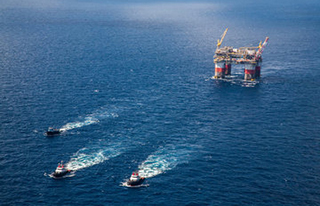(Bloomberg) — Chevron Corp. reported a loss that was double analysts’ estimates amid an oil-market collapse that’s sparked currency crises, corporate bankruptcies, credit downgrades and hundreds of thousands of layoffs across the industry.
Chevron swung to a loss of $725 million, or 39 cents a share, from a profit of $2.6 billion, or $1.37 a year earlier, the San Ramon, California-based company said in a statement on Friday. The result was worse than the average 19-cent loss expected by 19 analysts in a Bloomberg survey. Sales dropped by almost a third to $23.6 billion.
The last time the world’s third-largest oil explorer by market value posted a first-quarter loss was 1992, when crude traded for about $18 a barrel. Chairman and Chief Executive Officer John Watson has cut one of every 10 jobs, lowered production targets and written off some discoveries that would cost too much to bring to fruition as shrinking cash flow prompted Standard & Poor’s and Moody’s Investors Service to cut Chevron’s credit ratings.
"I would just view it as a one-quarter disappointment," Brian Youngberg, an analyst at Edward Jones in St. Louis who rates the shares a buy and owns none, said Friday in a phone interview. "It shows they need to continue to really focus on right-sizing the cost structure, which is a challenge across the industry right now."
The shares fell 1.1% to $101.25 at 10:8 a.m. in New York.
While the company’s production was little change from a year earlier, the average price for the global crude benchmark plunged. Brent oil was 36% cheaper in the quarter.
The company’s worldwide output was 2.67 million oil-equivalent barrels a day, barely down from 2.68 million a year earlier. Production increases from project ramp-ups in the U.S., Nigeria and other areas helped offset a shut-in in the Partitioned Zone, an area between Kuwait and Saudi Arabia, as well as normal field declines.
“We continue to lower our cost structure with better pricing, work flow efficiencies and matching our organizational size to expected future activity levels,” Watson said in the statement. “Our capital spending is coming down. We are moving our focus to high-return, shorter-cycle projects and pacing longer-cycle investments.”
Despite the squeeze, Chevron this week committed to pay $1.07 to investors for every share they own, a dividend that will cost the company about $2 billion when the checks are cut in June. Spending on capital projects is expected to range from $25 billion to $28 billion this year, Chevron said last month. That would exceed the budget of bigger rival Exxon Mobil Corp. Watson has said capital outlays will drop to the $17 billion to $22 billion range annually in 2017 and 2018.




